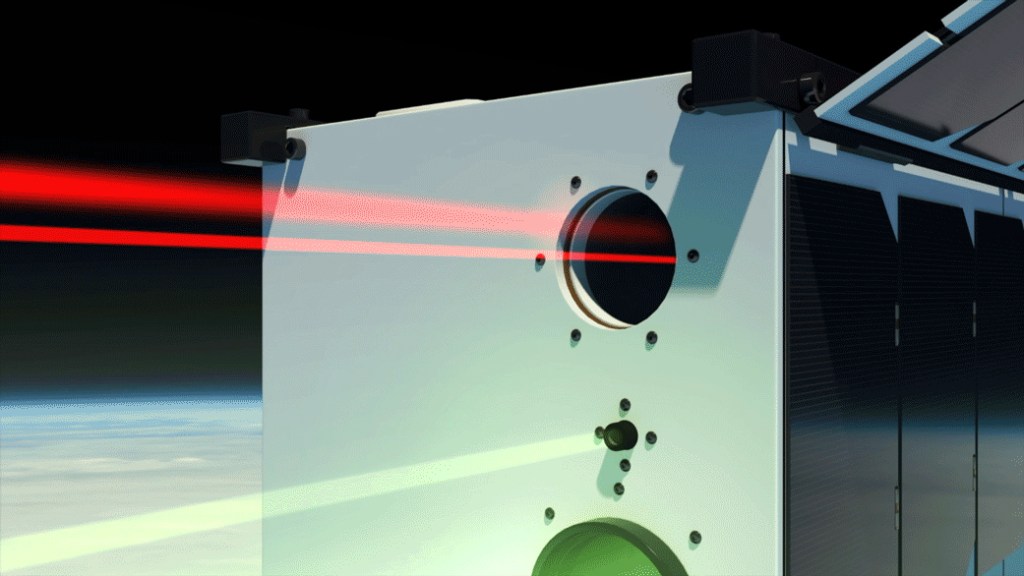Current Missions

Advanced Composite Solar Sail System
NASA is developing new deployable structures and materials technologies for solar sail propulsion systems destined for future low-cost deep space missions. The mission uses composite materials in its novel, lightweight booms that deploy from a CubeSat. ACS3 launched on April 23, 2024, aboard a Rocket Lab Electron rocket from the company’s Launch Complex 1 in Māhia, New Zealand.

CAPSTONE
A microwave oven–sized CubeSat weighing just 55 pounds is the first spacecraft to test a unique, elliptical lunar orbit as part of NASA’s CAPSTONE mission. CAPSTONE launched on June 28, 2022 aboard a Rocket Lab’s Electron rocket from the company’s Launch Complex 1 in New Zealand. CAPSTONE entered lunar orbit in November 2022.

CubeSat Laser Infrared CrosslinK
The CLICK mission will demonstrate technology to advance the state of the art in communications between small spacecraft as well as the capability to gauge their relative distance and location. CLICK is comprised of two sequential missions. CLICK A launched on July 14, 2022 aboard SpaceX's 25th Commercial Resupply Service (CRS-25) mission to the International Space Station. The CLICK B/C launch is anticipated no earlier than August 2025.

DiskSat
NASA is funding designers of small spacecraft at The Aerospace Corporation in El Segundo, California, to develop a technology demonstration of an evolutionary alternative to the CubeSat standard that maintains the benefits of that platform while overcoming key limitations. DiskSat is a plate-shaped satellite 40 inches in diameter and an inch thick that could offer more power and surface area for instruments, providing more opportunities for NASA to expand upon target mission objectives for small spacecraft. This first DiskSat demonstration is anticipated to launch no earlier than April 2026.

Pathfinder Technology Demonstrator
This series of technology demonstrations will benefit future missions by demonstrating the operation of new subsystem technologies on orbit. These include propulsion systems that provide the capability to maneuver small science platforms; novel technologies to generate more electrical power for deep space small spacecraft missions; and laser communications systems that will greatly increase the amount of data that can be transmitted from the spacecraft to the ground. On August 16, PTD-4 and PTD-R launched on SpaceX’s Transporter-11 mission from Space Launch Complex 4E at Vandenberg Space Force Base in California.

Starling
NASA’s Starling mission is advancing the readiness of various technologies for cooperative groups of spacecraft – also known as distributed missions, clusters, or swarms. Starling will demonstrate technologies to enable multipoint science data collection by several small spacecraft flying in swarms. The six-month mission will use four CubeSats in low-Earth orbit to test four technologies that let spacecraft operate in a synchronized manner without resources from the ground. Starling launched July 17, 2023 from Rocket Lab Launch Complex 1 in New Zealand.
Past Missions

CubeSat Proximity Operations Demonstration (CPOD)
The CubeSat Proximity Operations Demonstration (CPOD) mission has ended after the spacecraft’s fuel was depleted. The mission was unable to demonstrate rendezvous, proximity operations and docking (RPOD) maneuvers as planned.

Edison Demonstration of SmallSat Networks (EDSN)
On November 3, 2015, the eight small satellites of the Edison Demonstration of Smallsat Networks (EDSN) mission were lost in the failure of the launch vehicle that was carrying them to orbit as secondary payloads. There will be an opportunity to complete some of the objectives of the EDSN mission in the Nodes follow-on mission.

Integrated Solar Array and Reflectarray Antenna (ISARA)
The ISARA mission demonstrated a reflectarray antenna that increases downlink data rates for CubeSats from the existing baseline rate of 9.6 kilobits per second (kbps) to more than 100 megabits per second (Mbps). The ISARA spacecraft was launched November 12, 2017 on the Cygnus Resupply Mission (OA-8) from the Mid-Atlantic Regional Spaceport, Wallops Flight Facility, Virginia.

Lunar Flashlight
NASA’s Lunar Flashlight launched Dec. 11, 2022, to demonstrate several new technologies, with an ultimate goal to seek out surface ice in the permanently shadowed craters of the Moon’s South Pole.

Nodes
Nodes is a technology demonstration mission that was launched to the International Space Station on December 6, 2015. The two Nodes satellites subsequently deployed from the Station on May 16, 2016 to demonstrate new network capabilities critical to the operation of swarms of spacecraft.

Optical Communications and Sensor Demonstration (OCSD)
The OCSD mission addresses two cross-cutting capabilities of value to many future small spacecraft missions: high-speed optical transmission of data and small spacecraft proximity operations. This mission consists of two flights. The second OCSD mission, with two satellites, launched November 12, 2017 on the Cygnus Resupply Mission (OA-8) from the Mid-Atlantic Regional Spaceport, Wallops Flight Facility, Virginia.





























